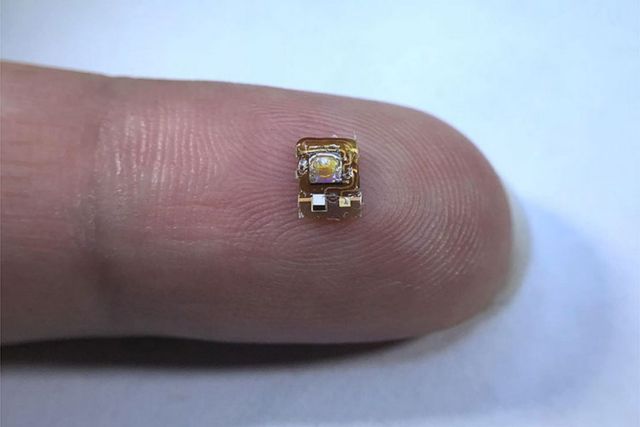This wireless implant can measure the oxygenation of living tissue deep below the surface of the skin.
Engineers at the University of California, Berkeley, have created a tiny wireless implant that can provide real-time measurements of tissue oxygen levels deep underneath the skin. The device, which is smaller than the average ladybug and powered by ultrasound waves, could help doctors monitor the health of transplanted organs or tissue and provide an early warning of potential transplant failure.
The technology, created in collaboration with physicians at the University of California, San Francisco, also paves the way for the creation of a variety of miniaturized sensors that could track other key biochemical markers in the body, such as pH or carbon dioxide. These sensors could one day provide doctors with minimally invasive methods for monitoring the biochemistry inside functioning organs and tissues.
“It’s very difficult to measure things deep inside the body,” said Michel Maharbiz, a professor of electrical engineering and computer sciences at UC Berkeley and a Chan Zuckerberg Biohub Investigator. “The device demonstrates how, using ultrasound technology coupled with very clever integrated circuit design, you can create sophisticated implants that go very deep into tissue to take data from organs.”
A schematic of the oxygen-detecting implant, which measures 4.5 millimeters long by 3 millimeters wide. The µLED, O2-sensing film, and optical filter make up the oxygen sensor, and are controlled by an integrated circuit (IC). The piezo-crystal converts an electronic signal from the IC into ultrasonic waves that can be transmitted safely through living tissue. Credit UC Berkeley image by Soner Sonmezoglu
Oxygen is a key component to cells’ ability to harness energy from the food that we eat, and nearly all tissues in the body require a steady supply in order to survive. Most methods for measuring tissue oxygenation can only provide information about what is happening near the surface of the body. That is because these methods rely on electromagnetic waves, such as infrared light, which can only penetrate a few centimeters into skin or organ tissue. While there are types of magnetic resonance imaging that can provide information about deep tissue oxygenation, they require long scanning times, and so are unable to provide data in real-time.
Maharbiz is the senior author of a new paper describing the device, which appears in the journal Nature Biotechnology.
Top image: UC Berkeley photo by Soner Sonmezoglu
source University of California, Berkeley







Leave A Comment